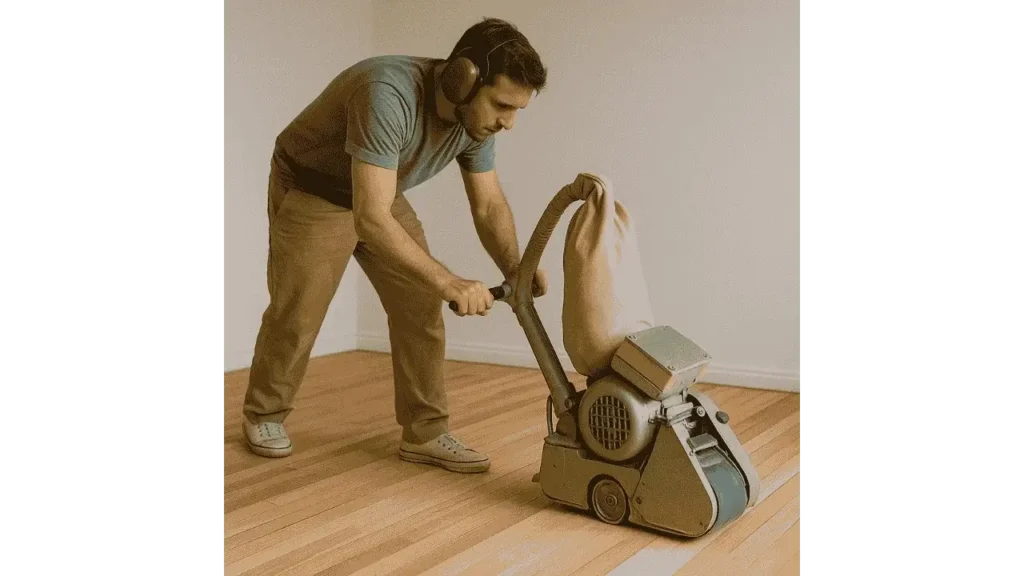If you’ve ever looked at your worn-out hardwood floors and thought, “It’s time for a change,” you’re not alone. Sanding hardwood floors is one of the best ways to breathe life back into them. But here’s the thing: before you jump in, it’s important to know how long it actually takes. Whether you’re a weekend DIYer or planning to call in the pros, having a realistic timeline can save you from stress and surprises. Let me share what I’ve learned from working with dozens of homeowners on floor restoration projects.

What Affects the Time It Takes to Sand a Floor?
One of the biggest factors is the size of the area you’re working with. A single room won’t take as long as an open-plan living and dining area. But size isn’t the only thing that matters. If the floors have deep scratches, old stains, or are uneven, you’ll need extra sanding passes to even things out. That adds hours to the job. The type of wood matters, too, softer woods like pine sand go down faster, while harder woods like oak or maple take more effort and time.
“The overall condition of your hardwood floors can double your sanding time if they haven’t been maintained,” says Pete Delano, a restoration specialist at TimberCore Solutions in Ontario.
Also, the kind of sanding machine you’re using plays a role. Professional-grade equipment makes quicker, cleaner work. If you’re using rental tools, expect a slower pace and more physical work.
How Long Does It Usually Take?
For a standard-sized room of around 200 square feet, sanding alone usually takes 4 to 8 hours. That includes setting up the space, doing a few sanding passes, and cleaning up. If your floors are in rough shape or you’re working on more than one room, plan for a full weekend, or even longer. Bigger homes or top-to-bottom refinishing jobs can stretch out over several days. And don’t forget: if you’re applying a finish afterward, you’ll need to build in drying and curing time.
Read More: How to Remove Moisture from Wood Flooring?
Hiring Pros vs. Doing It Yourself
I’ve seen homeowners tackle floor sanding themselves, and while it can be rewarding, it’s not easy. If you’ve never handled a drum sander, the learning curve is steep. You also have to move furniture, seal off other rooms from dust, and stay on top of the sanding sequence. Start too coarse or skip grits, and you’ll end up with a rough surface.
On the other hand, pros can usually sand and prep a room in a day. They’re faster because they know what they’re doing, and they bring top-of-the-line equipment. That means less dust, fewer mistakes, and a better finish.
“DIY floor sanding can easily take twice as long if you’re not confident using the equipment,” notes Sarah Lemay, a flooring contractor based in Manchester, UK.
How Much Time for the Finish?
Once sanding is done, the job isn’t over. You’ll need to apply a protective finish, and that takes more time. If you’re using an oil-based polyurethane, you’ll have to wait up to 24 hours between coats. Water-based finishes dry faster, usually in 4 to 6 hours, but most still need at least two coats, sometimes three. And remember, even after the final coat dries to the touch, it can take up to a week to fully cure. Be gentle with the floors during that time, and hold off on moving furniture back too soon.
Final Takeaways
Sanding hardwood floors isn’t a quick afternoon project. The time it takes depends on the size of the space, the condition of your floors, your tools, and whether you go DIY or professional. For one room, you might get it done in a day. For a full house, expect several. Add in finish drying time, and you’ll need to plan your week accordingly. But once it’s done? You’ll have floors that feel brand new and genuinely transform the space.
